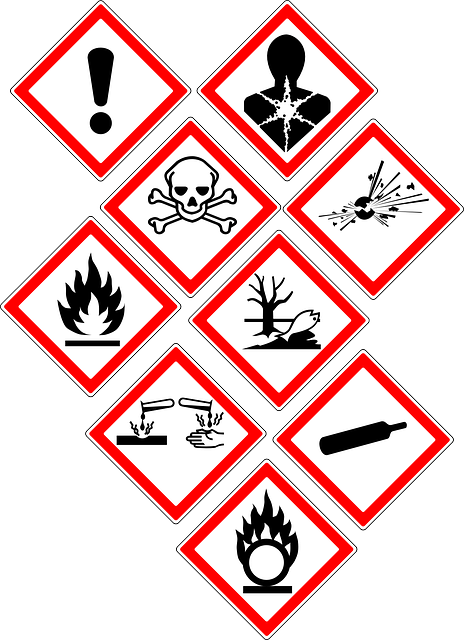Globally Harmonised System of Classification and Labelling of Chemicals (GHS)

Created under the supervision of United Nations, Globally Harmonised System of classification and labelling of chemicals (GHS) is the standard used for classification and labelling of chemicals (preparations and substances) to categorically segment them using the metrics of their internal properties, utilising standardised hazard notification elements comprising of Material Safety Data Sheets and Labels.
Chemicals are widely used across a spectrum of products from lubricants, antiseptics, paints, fuel – the list is endless. Regardless of their applications in day to day life, chemicals cast a potential threat in varying degrees.
Chemicals are characterised differently in different parts of the world, on the grounds of testing and their classification. For example, certain chemicals are categorised as highly inflammable and dangerous in some nations to others.
GHS aims to establish an understanding between physio-chemical properties of various substances and threat it poses to human health and their habitat. The studies from GHS entails methods encompassing the safety measures taken for chemical management – handling, transportation and use of chemicals in different industries. The GHS standards builds a scope to integrate chemical regulations globally, convening trade opportunities. The standard envelopes chemical management – packaging for transportation of chemicals and packaging for utilisation of these chemicals. These standards are continually evolved by relevant bodies to remain compliant. Previous classification and labelling of chemicals, forms the basis for redefining these standards. At the beginning of 2009, GHS system in Europe was enforced by the European Council and regulation 1272/2008 of the European Parliament for classification and labelling of chemicals, also known as CLP regulation. This system includes a standardised format for Material Safety Data Sheets (MSDS) and use pictograms that are easy to understand, along with warning placards.
GHS system is universally accepted with standardisation
- Physical Hazards – comprising of substances that makes them explosive, flammable or toxic in nature.
- Health Hazards – harmful chemicals, creates irritation to eyes or fatal if swallowed.
- Environmental Hazards – chemicals that are severely toxic, causing harm to the environment.
- Signage – official signs for items classified has hazardous in nature, including the symbols and pictograms.
- Labels – official labels including precaution statements, describing preventive measures and steps to take in case of accidental spills, exposure to human, storage mandates, and safety disposal techniques.
- Material Safety Data Sheets (MSDS) – prescribed regulatory format for safety data sheets including essential headings and sections; example chemical handling, first aid, etc.
Eventually, if all the nations comply by GHS to standardise and classify chemicals in order to protect human health and environment. In particular, this will aid developing nations to classify chemicals who are unable to do so due to lack of enough resources.
Hazard pictograms are also used to convey the risk and safety phrases that will accompany the chemical containers. From the CLP regulation (1272/2008), ‘R’ and ‘S’ have been replaced with new phrases used in combinations to communicate the risk caused by using ‘hazardous statements’ and providing ‘precautionary statements’ for safe handling of chemical substances along with safety related comments pertinent to emergency procedures, storage of the chemical substances, and disposal of chemical waste. In addition, information related to hazardous properties including physical properties, environment and health impacts can also be attached along with ‘Supplementary Hazard Information’ as per the examples provided in the below table.
| Code | Phrase |
| H226 | Flammable liquid and vapour |
| H332 | Harmful if inhaled |
| P102 | Keep out of reach of children |
| P263 | Avoid contact during pregnancy/while nursing |
| EUH014 | Reacts violently with water |
| EUH031 | Contact with acids liberates toxic gas |
The old hazard pictograms like ‘Poisonous’ and ‘Flammable’ are discontinued. Signal words have been added to the labels; example ‘Danger’ word is a warning of serious risks and ‘Warning’ illustrates lesser risks.
Relevance of GHS to businesses
If your business involves manufacturing, storing, supplying, handling and distribution of hazardous chemicals or hazardous chemical management of any type, you fall under the obligation of Classification and Labelling of Chemicals to remain compliant. It is mandatory to ensure all chemical classification is carried out as per the standards of GHS.
Chemical classification is a determination process that aims to classify compounds or elements based on certain characteristics, functions, structural properties and harmful impacts they can have on health.
The process encompasses identifying and evaluating the physical properties of the chemicals, with potential impact on human health. During classification of hazardous chemicals, the information that should go on the labels and Material Safety Data Sheet is determined.
To ensure that you remain compliant with mandatory labels and signage meeting GHS and WHS standards of your state, is by getting a full chemical safety audit on your business premise to prepare Material Safety Data Sheets for reviewing your existing chemical containers or manage their new inventory. These audits are carried out by chemists or professional companies who provide Safety Data Sheets which comply with GHS Standards.
The audit process usually encompasses:
- Compilation of a detailed list of chemicals used and stored in the business premise and other locations;
- List of signage, warning placards, and pictograms you have used for your stored chemical items, location of the storage, and method used for installation of these containers;
- Material Safety Data Sheet for chemicals stored on the premise as per GHS standards;
- Reviewing relevant WHS regulations, code of conducts and standards of the country.
If you need either a full audit of the hazardous chemicals in your workplace or only preparing/updating your Safety Data Sheets, get in touch with a compliance expert for consultation. The specialists come with a wealth of experience auditing the hazardous chemicals as per GHS standards to abide with necessary legislations and regulations.
